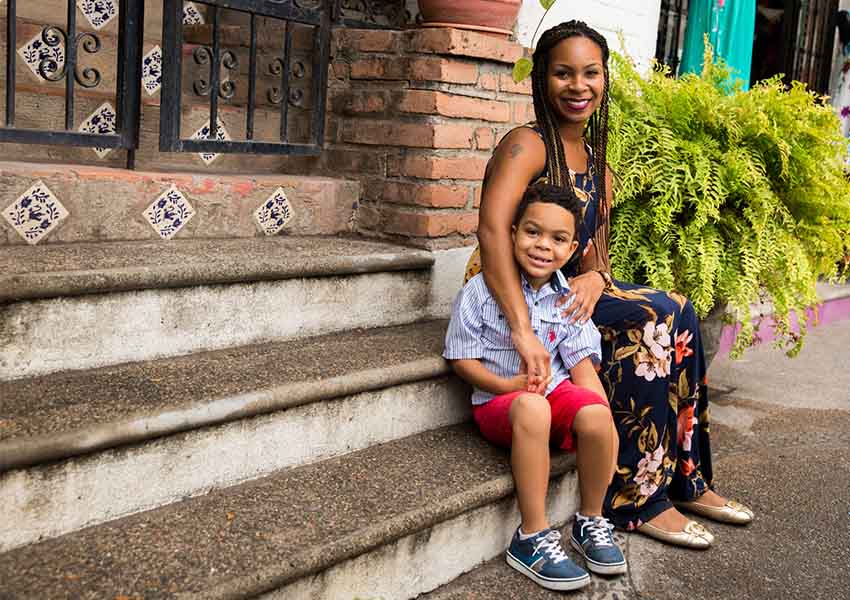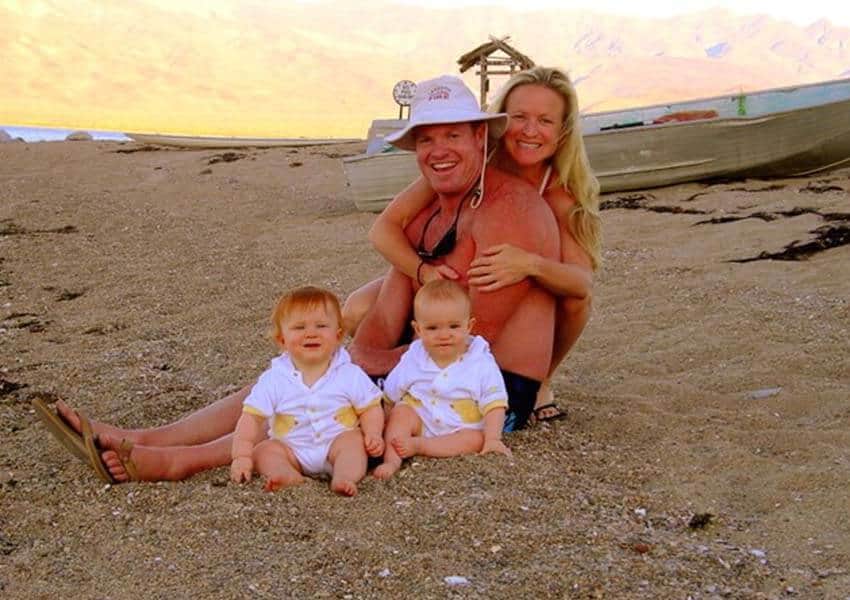When you think about who is moving to Mexico from the United States, you probably think of retirees seeking a warmer and more affordable place to live out their golden years.
While there is certainly a large population of senior snowbirds from the U.S. that live full- or part-time in Mexico, the truth is that most U.S. citizens moving to and living in Mexico today are younger people — mostly the children and spouses of Mexican citizens who have returned to their family’s home country.
According to Andrew Selee, President of the Migration Policy Institute, of the approximately 1.5 to 1.8 million U.S. citizens living in Mexico today, at least 550,000 are children of Mexicans who have returned, according to Mexican census numbers.
But there is also a growing number of young families from the U.S. with fewer direct ties to Mexico that are making the move or are already settled in the country. There is no official count of the number of American families living in Mexico today, but if their obvious presence in communities across the country is any indication, it is surely in the thousands, if not tens of thousands.
San Miguel de Allende-based relocation consultant Katie O’Grady has helped hundreds of individuals, couples and families plan, research and make the move to Mexico. She says there are myriad reasons American families move here, but it all boils down to improving their quality of life.

“The main driving force for families is their overall desire to have a life well-lived, quality family time and true connections with people — to be able to walk around their community and stop and literally smell the flowers, have conversations with people and make that personal connection,” she said.
Selee, who interviewed dozens of Americans living in Mexico for his book Vanishing Frontiers: The Forces Driving Mexico and the United States Together and has connections with U.S. immigrants all over the country, found similar reasoning in his research.
“Americans tend to move because they like the pace in Mexico — it’s a less frenetic society. They also like the sense of community. Family is tight. Neighbors are tight. There is a code about relationships between people here that Americans find attractive and refreshing and different from where they came from,” said Selee.
As an American citizen who moved from San Diego to Mexico in 2012 with her husband, Frank, and young twins, O’Grady has experienced firsthand the transformation that can occur when families leave the rat race and create more expansive, balanced and connected lives in Mexico.
Back in San Diego, Frank was a firefighter whose work required him to be away from home and in life- and health-threatening situations for days at a time. Katie was an accomplished K-12 Spanish teacher who retired early a few years after their twins were born to homeschool them.
Reflecting back, with all that she and Frank were balancing in their lives in the fast-paced environment of Southern California, O’Grady said, “We were like two ships passing in the night.”
The O’Gradys spent most of their precious time off together back then in Baja California, where they lived simply from their RV, played on the beach and finally had a chance to unwind.
“From an early age, my kids had a sprinkling of what life in Mexico looks like. For them, it always represented [that] mom and dad aren’t stressed,” O’Grady said. “Mexico always had this very positive connotation to it. It always represented relaxation, concentrated family time and adventure.”
As someone who grew up near the Mexican border, visiting Mexico frequently and having a grandfather who was the chief of the U.S. Border Patrol and Immigration in the 1940s — a time when border relations were more convivial than confrontational — O’Grady already had deep connections to Mexico. So when she and Frank dreamed of one day creating a different life for their family outside the U.S., Mexico was a natural fit.
In 2012, when their twins were eight years old, they made the move, first landing in San Pancho, Nayarit.
“We dove in. And we haven’t looked back with any regrets. Of course, we’ve had hard times, bumps in the road and inconveniences that weren’t expected. But that’s going to happen anywhere. I’d much rather be doing life on this side of the border any day,” said O’Grady.
She started blogging about their family’s experience immigrating to and living in Mexico, which grew in popularity and attracted the attention of others looking to make the move. In 2014, she launched her relocation consulting business, focusing on the Puerto Vallarta coastal corridor and San Miguel de Allende, where she lives now.

“The pandemic has been a huge impetus behind the current uptick in requests for my services. Every day there are more people,” O’Grady said. “The biggest difference I see now is inquiries are coming not just from the U.S. but also from Canada, Australia and Ireland. Before, 90% of my inquiries were from the U.S. Then, it was about political discomfort. Now, interest is a direct result of the pandemic.”
Selee also sees the pandemic as a catalyst for greater immigration into Mexico.
“In the COVID world, we learned that so many jobs can be done outside of offices. That is only going to encourage more people to look at where they want to live for quality of life. I think we have seen accelerated immigration to Mexico because of the pandemic,” he said.
But even before the pandemic, populations of American immigrants throughout Mexico were growing. Not just among retirees, two-parent families, couples and individuals but also among single parents such as Kimberly Miles.
It was her longtime wish to live abroad in a Spanish-speaking country that originally drew Miles and her four-year-old son from Alexandria, Virginia, to Puerto Vallarta — that, and her desire to create a different life, one that would allow her more time with her son, immerse them both in a new culture and give her a chance to start her own marketing consulting business.
Miles left her corporate job of 15 years and moved to Mexico in 2018. She is now her own boss, catering mostly to single moms like herself looking to launch their own businesses. She is also the creator and administrator of the Facebook Group Single Moms in Mexico.
Miles says her life in Mexico is markedly different than it was in Virginia. “The stress level is completely different. As a single mom in the northern Virginia area, it is extremely difficult,” she said.
“Not only is it expensive but there is also so much pressure to be a certain thing, do a certain thing, go to certain places and act a certain way. Here, I’ve found that’s not the case. I can be more relaxed and do the things I enjoy.”
Instead of rushing out of the house at 7 a.m. to get to work and get her son to school on time, only to turn around at the end of the day to pick him up and not get home until 6:30 p.m., now Miles works from home and clocks off at 2 p.m. when her son is done at school.
“Living here has provided me with a much better quality of life in terms of motherhood. Plus, I would not have had the opportunity to build a business had we stayed in Virginia,” she said.
Similar to what O’Grady and Selee have observed and experienced, the strong sense of community here — a different experience than she had in the U.S. — is what Miles finds so attractive about living in Mexico.

“Living in Mexico has restored my faith in humanity. People walk down the streets and say good morning to complete strangers. People are willing to go out of their way to help. When you see someone’s car broken down on the side of the road, people come out and help. I’ve never seen that back at home,” she said.
While moving to Mexico can provide harried families and parents a slower, more connected life rich with new cultural experiences, it is not without its challenges. Among the biggest are one’s ability to assimilate and adapt to things like a new language, unfamiliar social norms and a different sense of time. That’s not always easy for those conditioned in the customer-is-always-right, hurry-up culture of the United States.
“I tell people — wherever you are, there you will be. You are taking that wherever you go. A lot of people move to Mexico and it’s not the place for them,” Miles said. “It’s not the place, it’s you. Unless you understand yourself, you are not going to get what you are expecting.”
“The real opportunity,” said Selee about living in Mexico, “is integrating into local society and taking advantage of getting to know the country. There are Americans who move to Mexico and stay in American communities. Any immigrant is going to want to find people who have the same background, and you don’t want to give that up. But at the same time, you want to meet people from the country you are settling in and become part of the texture of the community you are living in. Mexico is increasingly an immigrant society. It’s ok to be one of those people.”
“Mexico is not for everybody, but it is for a lot of people,” said O’Grady. She advises families considering the move to not live in fear and figure out a way to re-create and reinvent their lives.
“If there is a little whisper knocking on the door of your heart saying, ‘See what else is out there,’ do it,” she said. “None of us are trees. We can get up and move. We don’t have to stay stuck anywhere – and that includes in Mexico.
“Try it all out; this is a big, diverse, magnificent, beautiful country — so get out and see it.”
- Did you recently move your family here to Mexico? We’re interested to hear about your experience in the comments.
Debbie Slobe is a writer and communications strategist based in Chacala, Nayarit. She blogs at Mexpatmama.com and is a senior program director at Resource Media. Find her on Instagram and Facebook.
